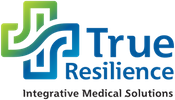Understanding the Impact of Mold Exposure
Mold exposure is becoming an increasingly recognized environmental health concern, particularly for individuals with heightened sensitivity. Mold can produce a variety of toxic substances, including mycotoxins, which can trigger a cascade of biological responses in the body. These responses often lead to chronic symptoms like fatigue, headaches, respiratory issues, and cognitive dysfunction. A lesser-known but equally impactful consequence of mold exposure is the development of interstitial inflammatory stasis, which contributes to persistent pain and discomfort in the body. This is where Fascial Counterstrain (FCS), a manual therapy technique, may offer relief.
The Pathophysiology of Mold Exposure
When mold spores are inhaled or come into contact with the skin, they can provoke a range of immune system responses. The body identifies these mold spores as foreign invaders, leading to inflammation as the immune system tries to neutralize them. For many people, especially those with sensitivities, this response can escalate into chronic inflammation.
Mycotoxins, toxic substances produced by certain types of mold, can also directly damage tissues and organs, leading to additional strain on the immune system. As a result, individuals exposed to mold can experience a range of symptoms such as:
- Respiratory distress or coughing
- Chronic fatigue and weakness
- Brain fog or cognitive dysfunction
- Musculoskeletal pain and stiffness
- Headaches

One of the key physiological consequences of mold exposure, particularly in susceptible individuals, is the development of interstitial inflammatory stasis. In simpler terms, this refers to the accumulation of fluid and inflammatory mediators in the spaces between cells (interstitial spaces). This accumulation can slow down the normal flow of nutrients and waste products, essentially leading to a kind of “traffic jam” in the body’s tissues. As a result, the fascia—the connective tissue that surrounds muscles, organs, and nerves—becomes restricted and tense. This can contribute to pain, reduced mobility, and a feeling of heaviness or stiffness in the body.
How Fascial Counterstrain Addresses Inflammatory Stasis
Fascial Counterstrain (FCS) is a hands-on therapy technique that focuses on gently repositioning the body to release fascial restrictions. The premise behind FCS is that when the fascia—this connective tissue matrix—is under tension, it can impede normal circulation and nerve function. By positioning the body in a way that promotes relaxation of the fascia, FCS aims to restore normal function to tissues that may have become restricted due to inflammation or injury.
In the case of mold exposure, FCS can help alleviate the symptoms associated with interstitial inflammatory stasis in the following ways:
- Reducing Fascial Tension: As the fascia becomes restricted due to inflammation from mold toxins or immune responses, it can restrict circulation and mobility. FCS techniques specifically target these restrictions, helping to relieve tension, improve blood flow, and restore mobility by draining the inflammation from the body. This could be particularly beneficial for individuals experiencing chronic pain or stiffness as a result of mold exposure.
- Promoting Circulation and Lymphatic Drainage: Mold-related inflammation can slow down the body’s natural processes for clearing toxins and waste. FCS may help promote better circulation, venous and lymphatic drainage, allowing the body to more effectively remove waste products, including mycotoxins, which may contribute to the inflammatory load.
- Supporting Autonomic Nervous System Function: Chronic inflammation and pain can overburden the autonomic nervous system, leading to a persistent state of fight-or-flight. FCS can work on dampening down the sympathetic response and stimulating the parasympathetic nervous system (the “rest-and-digest” side). This could be beneficial for those suffering from stress-related symptoms, including chronic fatigue and anxiety, often seen in mold-sensitive individuals.
- Reducing Neurological Discomfort: Mold exposure can also affect other parts of the nervous system and dura, leading to symptoms like headaches, brain fog, and general cognitive dysfunction. By addressing fascial restrictions in areas like the neck, head, and spine FCS may help reduce inflammation around nerves, and dura improving pain levels and potentially alleviating some of the neurological symptoms associated with mold illness.
Mold toxicity and mold sensitivity, while often confused, are distinct conditions with different mechanisms and treatment approaches. Mold toxicity, or mycotoxicosis, occurs when an individual is exposed to toxic compounds called mycotoxins produced by certain molds like Stachybotrys or Aspergillus. This results in a toxicological effect, not an immune response, and can lead to symptoms such as chronic fatigue, brain fog, respiratory issues, hormonal dysregulation, and neurological disturbances. Treatment typically focuses on removing exposure, supporting detox pathways (using binders, glutathione, or sauna), and calming inflammation. In contrast, mold sensitivity involves an inappropriate immune reaction to mold spores or antigens, and may present with symptoms like sneezing, sinus congestion, itchy eyes, skin rashes, or asthma flares. This sensitivity can involve IgE, IgG, or T-cell mediated immune responses. In such cases, Low Dose Immunotherapy (LDI) can be particularly effective. LDI works by introducing extremely dilute concentrations of mold antigens under the tongue to gradually retrain the immune system to tolerate those substances without overreacting. It is especially useful for individuals who are no longer mold toxic but continue to have persistent immune sensitivity to mold exposure. By modulating the immune response rather than suppressing it, LDI can help reduce environmental reactivity, brain fog, and fatigue in mold-sensitive individuals, ultimately restoring a better quality of life.
The Bottom Line
Fascial Counterstrain offers a unique approach to addressing the musculoskeletal and inflammatory symptoms often seen in individuals with mold exposure. While FCS cannot treat the underlying mold illness itself, it can support the body’s healing processes by addressing the fascial restrictions and inflammatory stasis that often develop as a result of mold-induced inflammation.
If you are experiencing symptoms of mold exposure, it’s important to consult with a healthcare provider who understands the complexities of mold illness. In combination with environmental remediation and medical treatment, therapies like Fascial Counter-strain will play a significant role in your recovery. Book yourself a consultation today!
